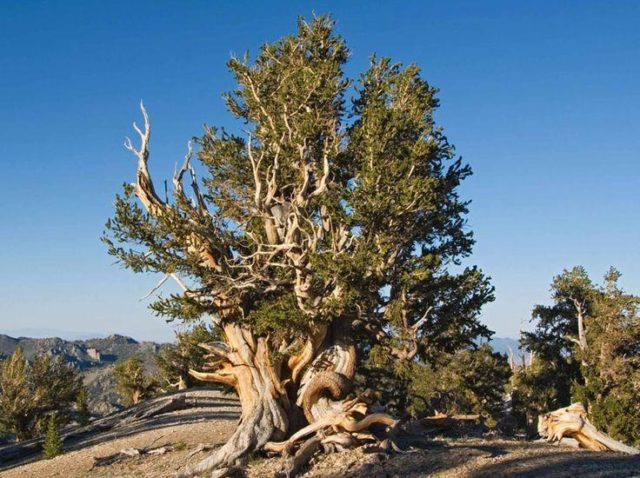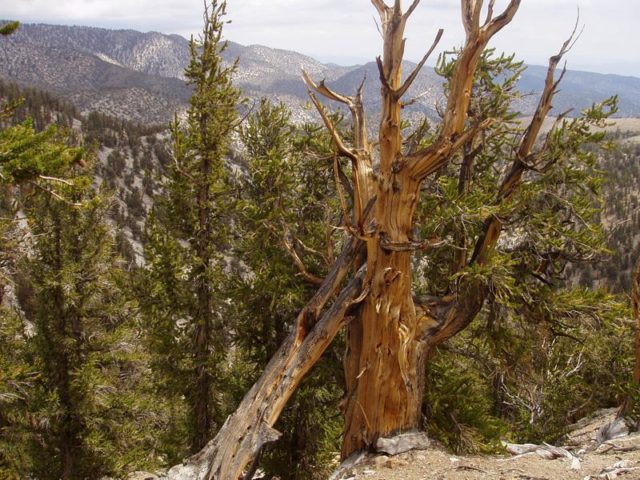Content
There are many plants in the world that live longer than some countries or even civilizations. One of these is the Methuselah pine, which sprouted long before the birth of Christ.
Where the Methuselah pine grows
This unusual plant grows in the National Park in the United States on the slope of Mount White, but its exact location is hidden, and only a few park workers know it. The nature reserve on this mountain was founded in 1918, and quickly became famous for the diversity of flora in these places. Due to the favorable natural conditions at the base and on the slopes of the mountains, a wide range of plants grows here, among which there are quite a few long-livers, although the most famous, of course, is Methuselah. The entrance to the park is open to everyone, but it is best to purchase a ticket in advance. The main disappointment for tourists is that, despite the popularity of the Methuselah pine, excursions to it are not conducted, since employees do not want to give away the place where the tree grows, because they are afraid for the safety of its microenvironment.
Age of the Methuselah pine
Presumably, the pine seed that gave rise to such a great tree sprouted about 4851 years ago, or 2832 BC. Even for this species, such a case is unique. Scientists explain the phenomenal vitality of culture by the fact that Mount White has developed the amazing climate that bristlecone pines need to maintain stable life. They need a dry windy area with a minimum of rain and strong rocky soil. In addition, the dense bark of the tree contributes to longevity - neither insects nor diseases "take" it.
The amazing pine tree was named after the biblical character - Methuselah, whose age at the time of death, according to legends, was 969 years old. The tree has long overcome this meaning, but its name continues to carry a deep meaning. In the same national park, bristlecone pines were also found - descendants of Methuselah, whose age is 100 or more years. This is of great importance for biologists and for humanity as a whole, since the species of "long-lived pines" is very rare, grows in only a few places in the United States, and Mount White park allows it to be preserved and even multiplied.
Discovery history
The tree was first discovered by scientist Edmond Schulman in 1953. He was lucky that the plant, by chance, was already in the protected area, so the park administration was notified of such a find. In addition, Shulman published an article in which he talked about Methuselah and the value the pine tree has for biology and the world in general. After the publication became available to the public, crowds of people poured into the park to see and touch this wonder of the world, despite the fact that the reserve is located high in the mountains, and it is not so easy to get to it. At that time, the location of the ephedra was known to people from recently published materials, and it was not so difficult to find the giant. Such a flow of people had a good effect on the profits of the park, but soon access to the Methuselah pine tree became closed.
Why is the location of the pine classified?
Many visitors to the park and lovers of wildlife are worried about why the park hid this unique pine tree from people.The answer to it is quite trivial: human intervention almost destroyed the ephedra of Methuselah.
Everyone who got to the plant considered it his duty to take a piece of bark or a cone with him, literally disassembling a pine tree in parts. In addition, outright vandals also came to her, chopping off branches, and then selling them for a lot of money to park visitors. Some of the guests left marks on the tree with a knife.
In addition, regular excursions negatively affected the microenvironment of the plant. As a result of such interference of the human factor in the specific conditions that the plant required to maintain life, the plant began to wilt. As soon as biologists saw the first signs that Methuselah might perish, any visits and excursions were canceled, and visitors were not shown the famous tree even from afar. Even at the moment, the pine still has not gained the previous strength that it had before 1953, so it is under the constant supervision of biologists.
Despite the fact that there are other long-lived plants on Earth, the Methuselah pine still remains the most ancient tree in the world, which inspires an irresistible delight and makes you involuntarily wonder how much this culture has survived and how terrible it would be to lose it now.










